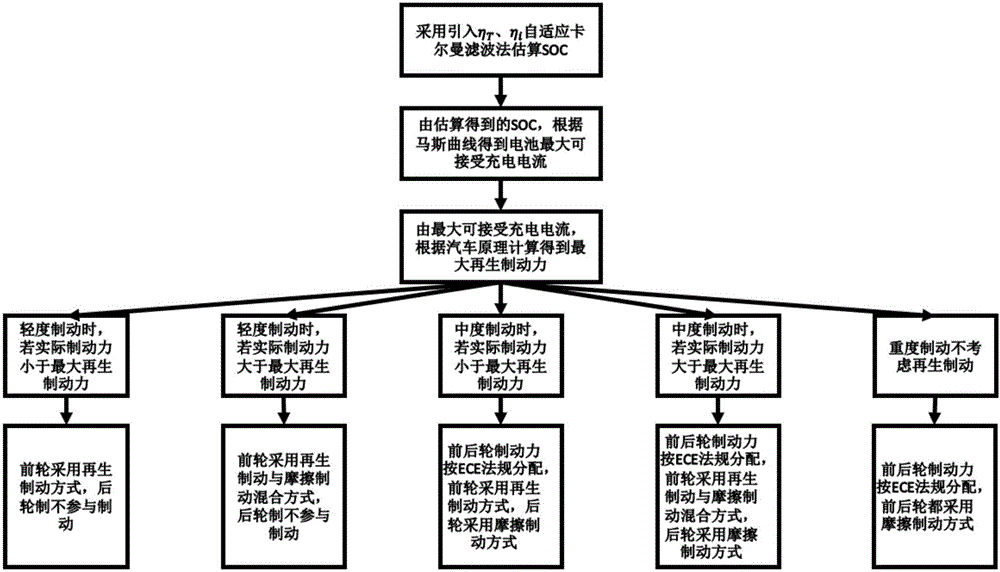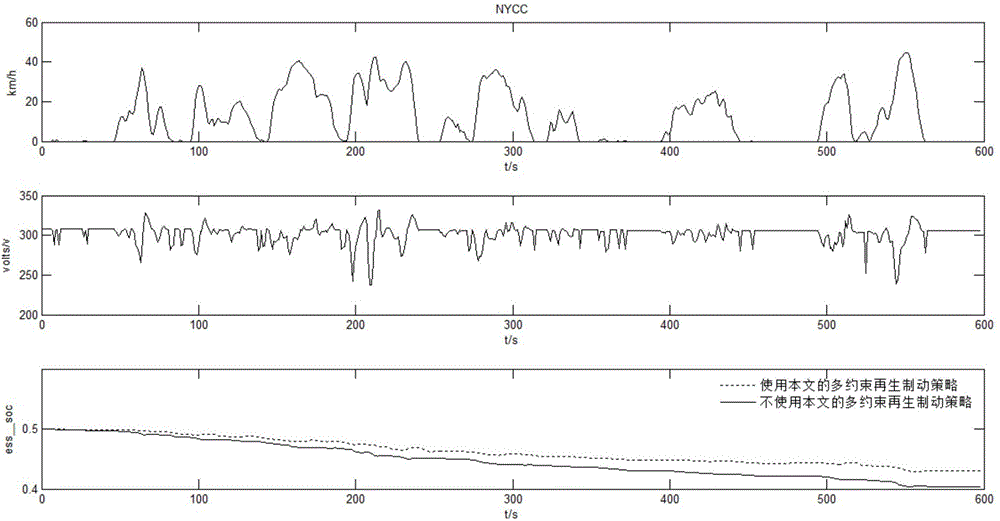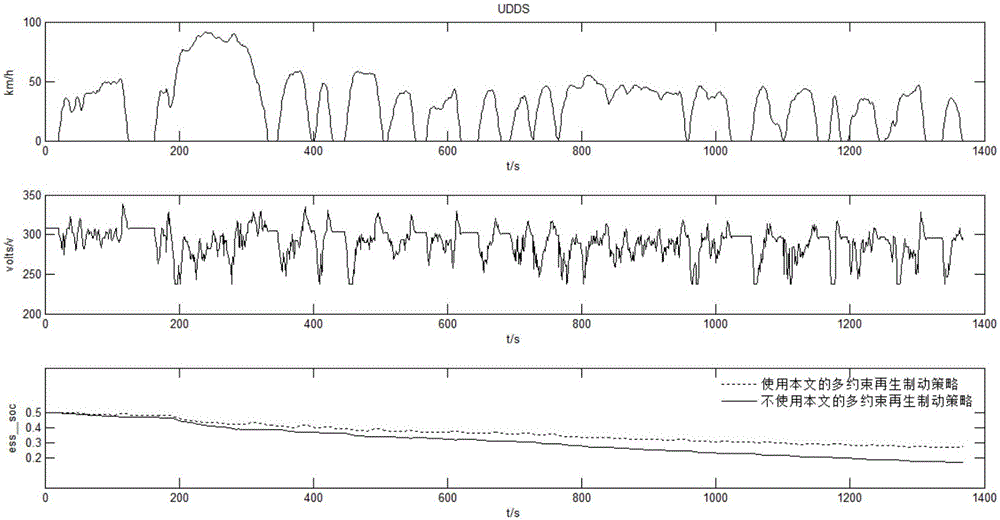Electric automobile regenerative brake control method based on multi-constraint conditions
A technology of electric vehicles and regenerative braking force, which is applied in the direction of electric vehicles, electric braking systems, vehicle components, etc., and can solve the problems of not taking regenerative braking into consideration, threatening safety, shortening lifespan, etc.
- Summary
- Abstract
- Description
- Claims
- Application Information
AI Technical Summary
Problems solved by technology
Method used
Image
Examples
Embodiment
[0078] figure 1 It is a flow chart of the electric vehicle regenerative braking control method based on multiple constraint conditions in the present invention.
[0079] In this embodiment, the present invention is based on the electric vehicle regenerative braking control method under multiple constraint conditions, mainly including two steps: calculating regenerative braking force and regenerative braking control based on multiple constraint conditions, combined below figure 1 The two steps are described in detail as follows:
[0080] S1. Calculate the regenerative braking force according to the charging current of the battery
[0081] S1.1. Estimating the state of charge SOC of the electric vehicle battery
[0082] S1.1.1. Collect the current at the battery input terminal through the current sensor, then collect the temperature of the braking system through the temperature sensor, and perform fitting training through MATLAB to obtain the influence factor η of the temperat...
example
[0136] Establish a pure electric vehicle model in ADVISOR, and verify it by establishing actual road conditions, and the actual road conditions choose 4 common working conditions in ADVISOR: New York City Working Condition NYCC, Urban Road Cycle Working Condition UDDS formulated by the US Environmental Protection Agency EPA , EUDC_LOW for European urban low-speed conditions, and HWFET for highway conditions.
[0137] (1), New York city working condition NYCC
[0138] Such as figure 2 As shown, the first picture in the figure shows the vehicle speed under the NYCC working condition, the second picture shows the battery charging voltage under this working condition, and the dotted line in the third picture shows the SOC after using the regenerative braking strategy described in the present invention The change trend, the solid line in the third figure indicates the SOC change trend after using the regenerative braking strategy in the ADVISOR software. It can be seen from the ...
PUM
 Login to View More
Login to View More Abstract
Description
Claims
Application Information
 Login to View More
Login to View More - R&D
- Intellectual Property
- Life Sciences
- Materials
- Tech Scout
- Unparalleled Data Quality
- Higher Quality Content
- 60% Fewer Hallucinations
Browse by: Latest US Patents, China's latest patents, Technical Efficacy Thesaurus, Application Domain, Technology Topic, Popular Technical Reports.
© 2025 PatSnap. All rights reserved.Legal|Privacy policy|Modern Slavery Act Transparency Statement|Sitemap|About US| Contact US: help@patsnap.com



